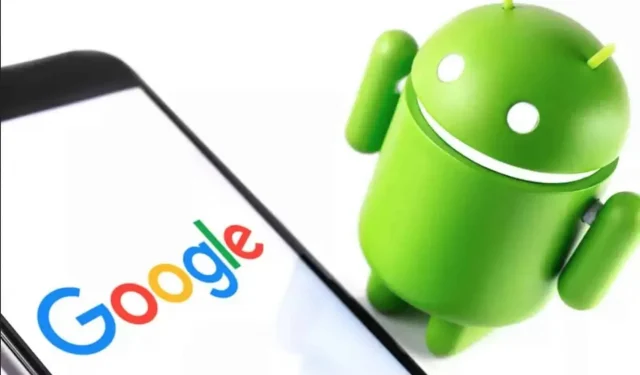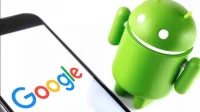Android 13 will be available at the end of the year. A developer preview already exists and you can install it if you have a compatible smartphone.
Android 12 has been available for a relatively short time and as always, Google is now focused on the next major release of Android 13 Tiramisu. In a blog post last February, Mountain View announced the availability of Android 13 Developer Preview 1. This release brings several new themes, privacy and security features, lock and home screen updates, and more.
Google will offer the first beta versions within a few months, with the final version coming in the fall. While these builds are primarily for developers to test new features, you can install them on your device.
If you have a compatible smartphone – currently only some Google Pixels – you can connect your device to your computer and use the Google Android Flash Tool to download and install Android 13 Developer Preview 1.
Like any pre-release, the Android 13 Developer Preview may experience instability. If you want to install it, it’s best to do it on an extension phone if you have one. There may be more or less serious bugs making daily use difficult.
If this suits you, you can continue reading. Here is how to download and install Android 13 Developer Preview on your smartphone.
Which smartphones are compatible with Android 13 Developer Preview?
Google will officially release Android 13 this fall. At that time, it will be available on a wide variety of Android devices, but for now we must content ourselves with a list of the most limited:
- Pixel 4
- Pixel 4XL
- Pixel 4A
- Pixel 4A 5G
- Pixel 5
- Pixel 5A with 5G
- Pixel 6
- Pixel 6 Pro
If your device is not on this list, you will have to wait. Other devices will become such later.
Back up your device first
Now that you know you have a compatible Android smartphone, you need to back up your phone. By default, your Pixel should automatically save its data when connected to Wi-Fi, standby, and charged for 2 hours, but you can also start the operation manually. Depending on the amount of data, you may need a paid plan from Google One, otherwise Google Drive may be sufficient.
To back up your Pixel, go to Settings > Google > Backup & Backup Now. Depending on the date of the last backup and the number of applications and files to back up, the process may take several minutes. After that, you can download and install Android 13.
Enable USB debugging and OEM unlock
In order to install Android 13 on your Pixel, you must first connect it to your computer via USB, and for this, the Pixel must be unlocked and USB debugging activated. To do this, you must unlock Developer Options.
1. To unlock Developer Options, go to Settings > About, then tap Build Number seven times. Enter your password when prompted, and a new “Developer”menu should appear in System Settings.
2. Now enable USB Debugging via Settings > System > Developer Options and USB Debugging. The notification that appears briefly explains the purpose of this option, tap OK.
3. In developer options, enable OEM Unlock. This activates the device bootloader, the system that loads the OS on startup. You will then be able to select a different operating system at startup. In our case, Android 13.
Flash device with Android Flash Tool in Chrome
There are two ways to flash the Android 13 Developer Preview system image to your Pixel via a computer, but the easiest way is to use the Android Flash Tool. This works with some browsers including Chrome. Your computer must also have 10 GB of available memory.
If everything is in order, connect your Pixel to your computer via USB, unlock your device, and go to the Android Flash Tool website in Chrome. Next:
1. Click Get Started at the bottom of the site.
2. Click “Allow access to ADB”in the pop-up window that appears.
3. Click Add new device, select your device from the list and click Connect.
4. On your Pixel device, check “Always allow from this computer”and click “Allow”to allow access to the Android Flash Tool on your phone.
5. On your computer, click Developer Preview 1 under Featured Builds.
6. Click Install Build and then Confirm.
A pop-up that appears warns that installing Android 13 will wipe your phone, but that’s not a problem since you’ve backed up everything. If it hasn’t been done, do it now. Also, don’t touch or unplug your phone during the process as you could render it completely unusable. If you see another pop-up on your computer asking you to accept the Android 13 build, continue.
Now do the following:
1. Click “Start”on the pop-up window that appears on the computer.
2. On your Pixel, use the volume keys to select Unlock bootloader and press the button on the edge of your device. This will reboot your phone.
3. The software will be downloaded. This may take several minutes depending on your connection.
4. Once the process is complete, click “Start”on the pop-up window that will appear on your computer.
5. On your Pixel, use the volume keys to select Lock Bootloader and press the button on the edge of your device.
6. Finally, on your computer, click “Finish”, your smartphone will restart normally.
If everything went well, you should see an “Installation completed”message in the Android Flash Tool. This means that Android 13 Develop Preview is installed. You can disconnect your Pixel from your computer.
You can now use Android 13 on your Pixel
Once your Pixel restarts, you’ll see a notification that your device is running Android 13 Developer Preview. Click “OK”and set up your phone as if you were using a new smartphone. And voila!


